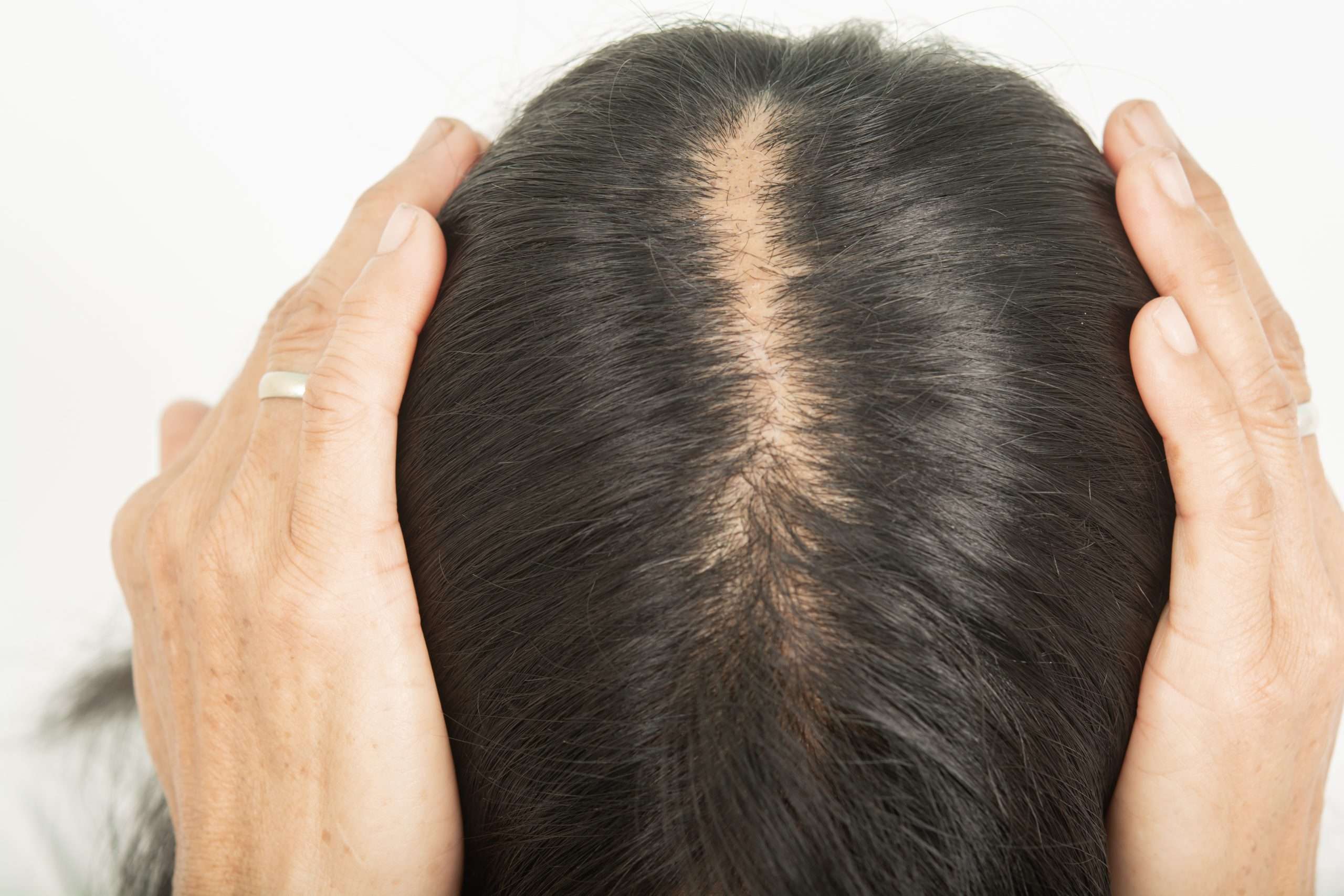Hair Loss Treatment

Everyone loses hair. It is normal to lose about 50-100 hairs every day. If you see bald patches or lots of thinning, you may be experiencing hair loss. There are many causes of hair loss. Women may notice hair loss after giving birth. People under a lot of stress can see noticeable hair loss. Some diseases and medical treatments can cause hair loss.
The most common cause of hair loss is a medical condition called hereditary hair loss.
About 80 million men and women in the United States have this type of hair loss. Other names for this type of hair loss are:
- Male-pattern baldness.
- Female-pattern baldness.
- Androgenetic alopecia.
Luckily, most causes of hair loss can be stopped or treated.
Hair Loss Diagnosis
We begin by asking questions. We will want to know whether the hair loss happened suddenly or gradually. Knowing this helps to eliminate causes.
We will also will ask what medicines you take, what allergies you have, and whether you have been dieting. Like a mystery, the slightest clue can solve the case. Women may be asked about their periods, pregnancies, and menopause.
We will also will carefully look at your scalp and hair. During an exam, the dermatologist may pull on your hair. Sometimes we’ll need to pull out a hair to get the necessary evidence. And sometimes a we will look at the hair on the rest of your body to see whether there is too little or too much hair in other areas.
Sometimes the evidence lies in your scalp. The dermatologist may remove a small piece of the scalp. This is called a scalp biopsy. A dermatologist can quickly and safely perform a scalp biopsy during an office visit. A scalp biopsy can be essential to solving the case. Sometimes, a blood test is necessary.
Because so many things can cause hair loss, it can take time to find the cause. You may need to make a few appointments.
Hair Loss Treatments
Just as there are many causes, there are many treatments for hair loss. We recommend treating hair loss early. Early means before you lose a lot of hair. Hair loss is harder to treat when a person has a lot of hair loss.
One or more of the following treatments may be part of your treatment plan.
Treatment available without a prescription
- Minoxidil: This medicine is applied to the scalp. It can stop hairs from getting thinner and stimulate hair growth on the top of the scalp. The U.S. Food and Drug Administration (FDA) has approved minoxidil to treat hair loss. It is the only hair re-growth product approved for men and women. A dermatologist may combine minoxidil with another treatment.
- Laser devices: Brushes, combs, and other hand-held devices that emit laser light might stimulate hair growth. These devices might make hair look more youthful in some people. Because the FDA classifies these products as medical devices, the products do not undergo the rigorous testing that medicines undergo. The long-term effectiveness and safety for these devices are not known.
Prescription medicine
- Finasteride: The FDA approved this medicine to treat men with hair loss. It comes in pill form and helps slow hair loss in most (about 88%) men. It helps stimulate hair re-growth in many (about 66%) men. Finasteride works by stopping the body from making a male hormone, dihydrotestosterone (DHT).
- Corticosteroid: If your hair loss is caused by inflammation in your body, a dermatologist may inject a medicine called a corticosteroid into your scalp. This can help stop the inflammation that happens when a person has alopecia areata. A corticosteroid is different from an anabolic steroid.
Procedures
The type of procedure that a dermatologist recommends will depend on how much hair you have lost. To achieve the best results, a dermatologist may use one or more of the following procedures:
- Hair transplantation: Skin on the scalp that has good hair growth is removed and transplanted to areas of the scalp that need hair.
- Scalp reduction: Bald scalp is surgically removed and hair-bearing scalp is brought closer together to reduce balding. Scalp reduction surgery can be performed alone or in conjunction with a hair transplant.
- Scalp expansion: Devices are inserted under the scalp for about 3 to 4 weeks to stretch the skin. This procedure may be performed before a scalp reduction to make the scalp more lax. It also can be performed solely to stretch hair-bearing areas, which reduces balding.
- Scalp flaps: A hair-bearing segment of scalp is surgically moved and placed where hair is needed.
Outcome
Once we know what is causing the hair loss, we can tell you what to expect. Sometimes hair loss does not need treatment. The hair will start to re-grow on its own. In some cases, changing what you do will stop the hair loss, allowing your hair to start re-growing. Sometimes treatment can restore hair.
SCHEDULE YOUR CONSULTATION*
*All consults are subject to a fee.






